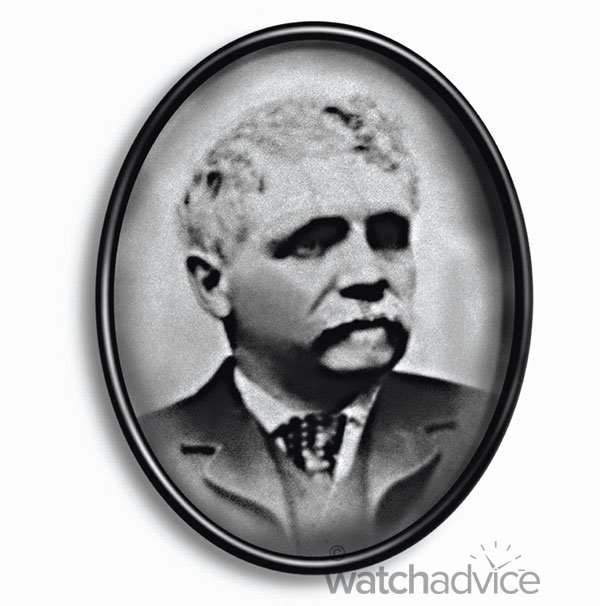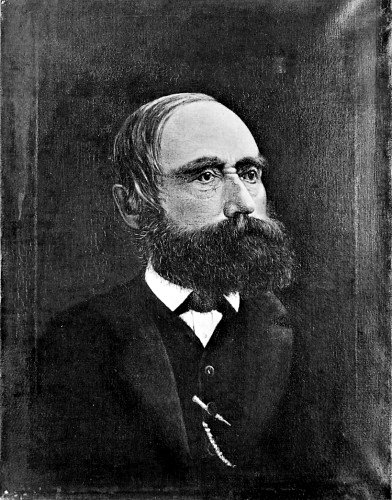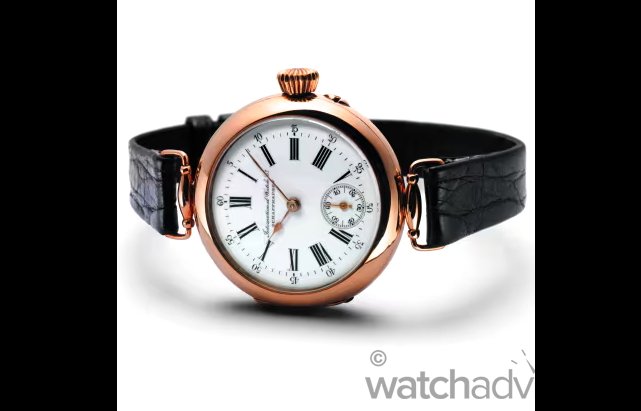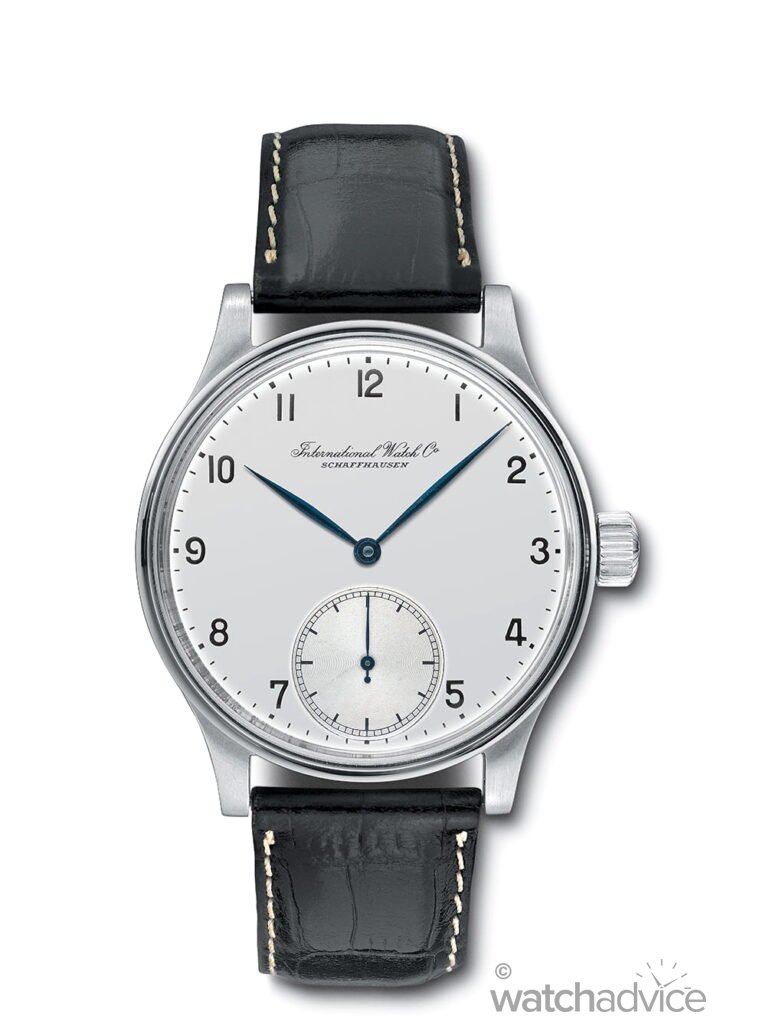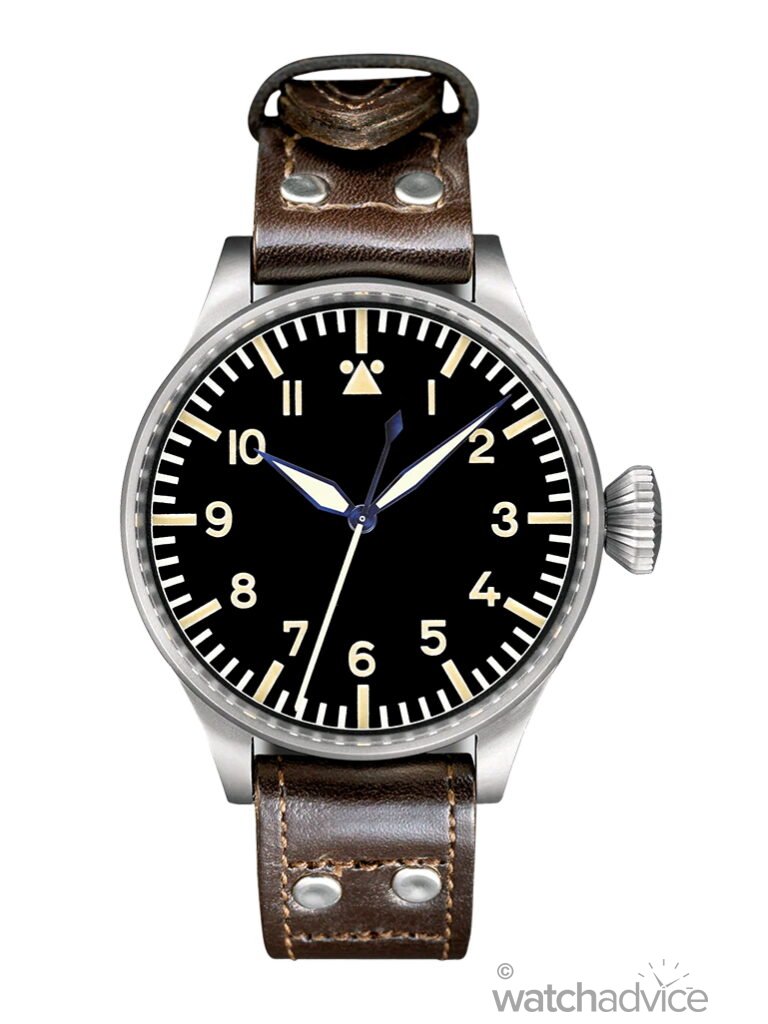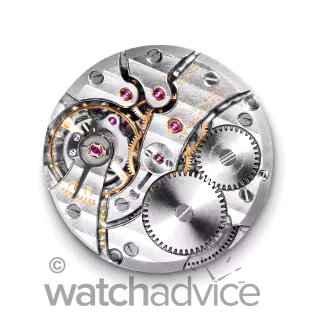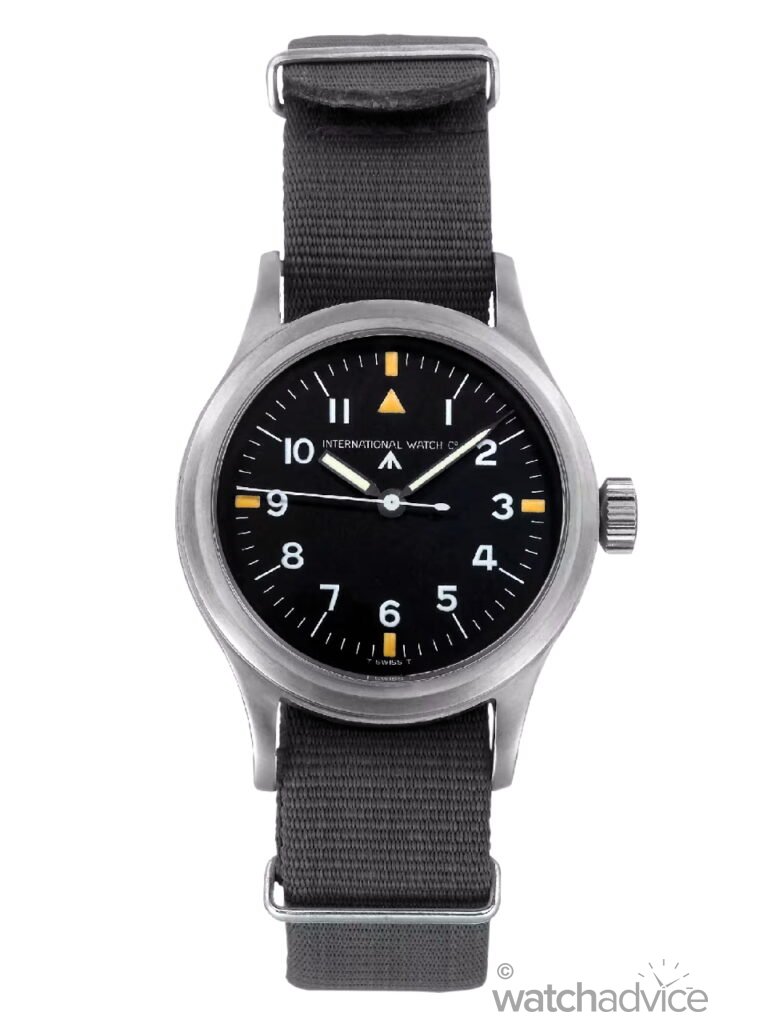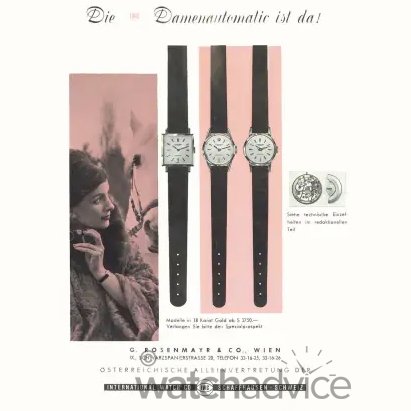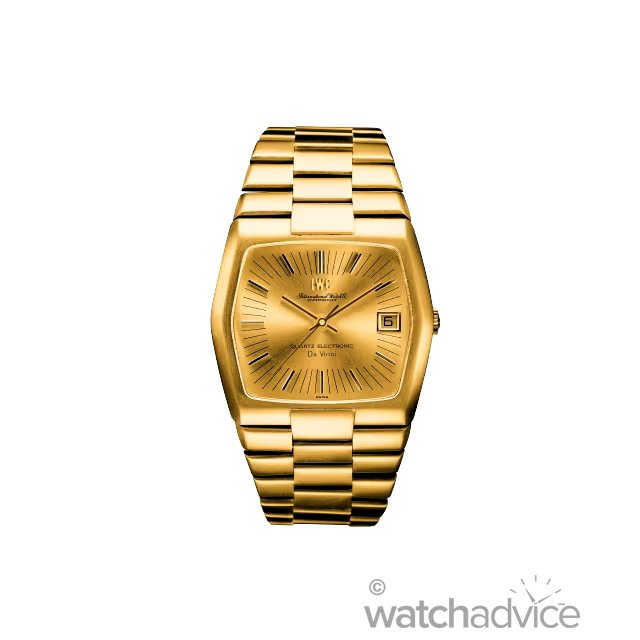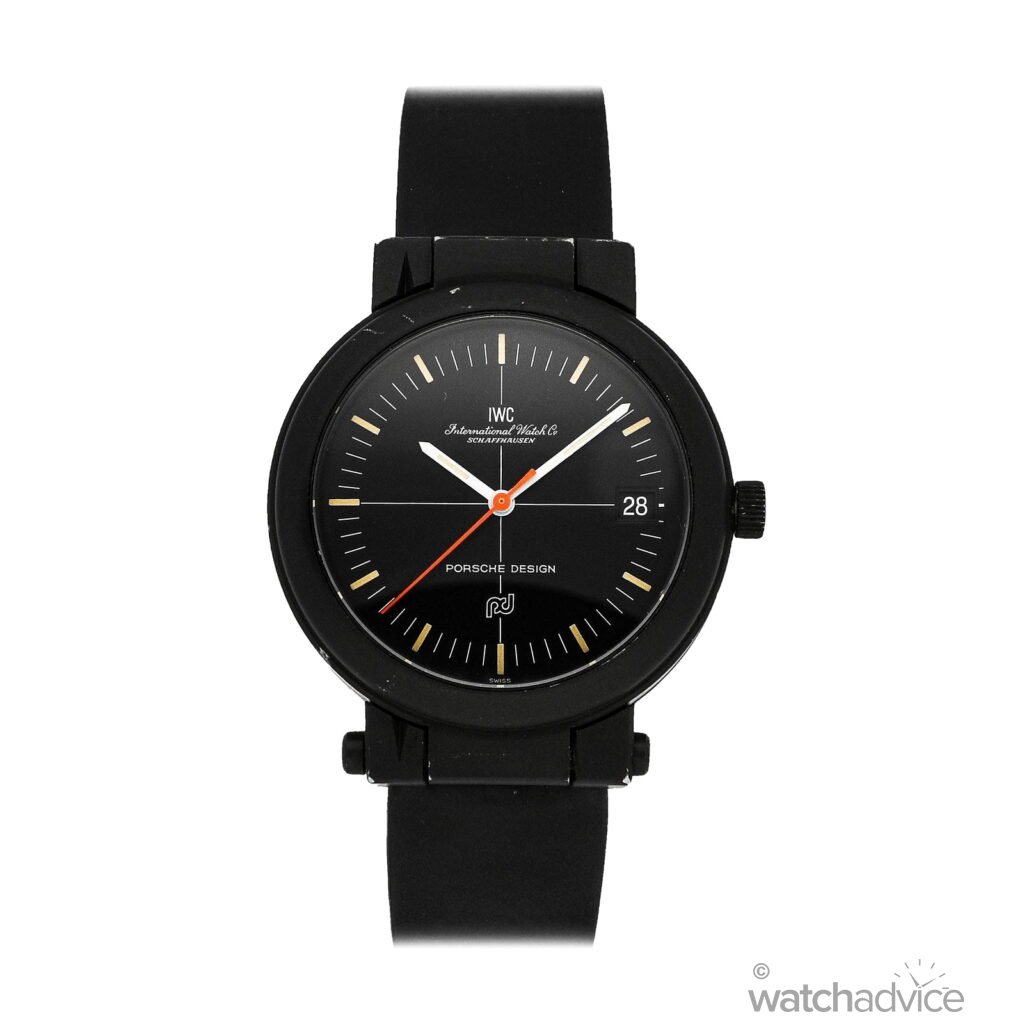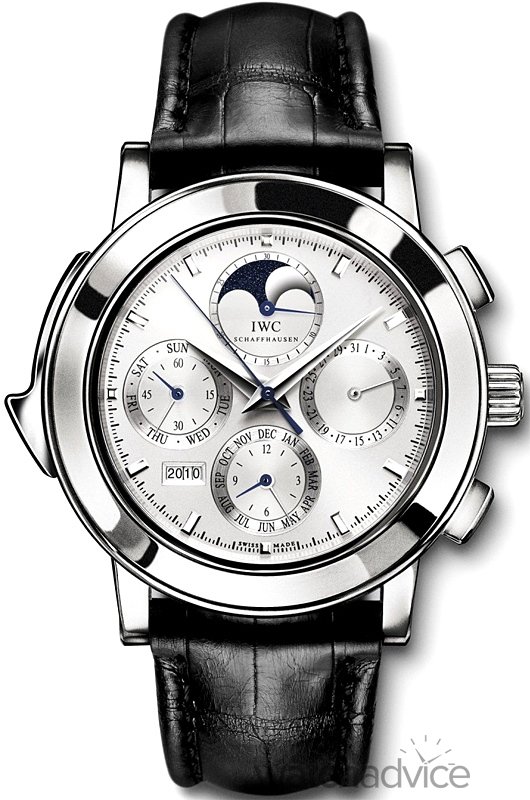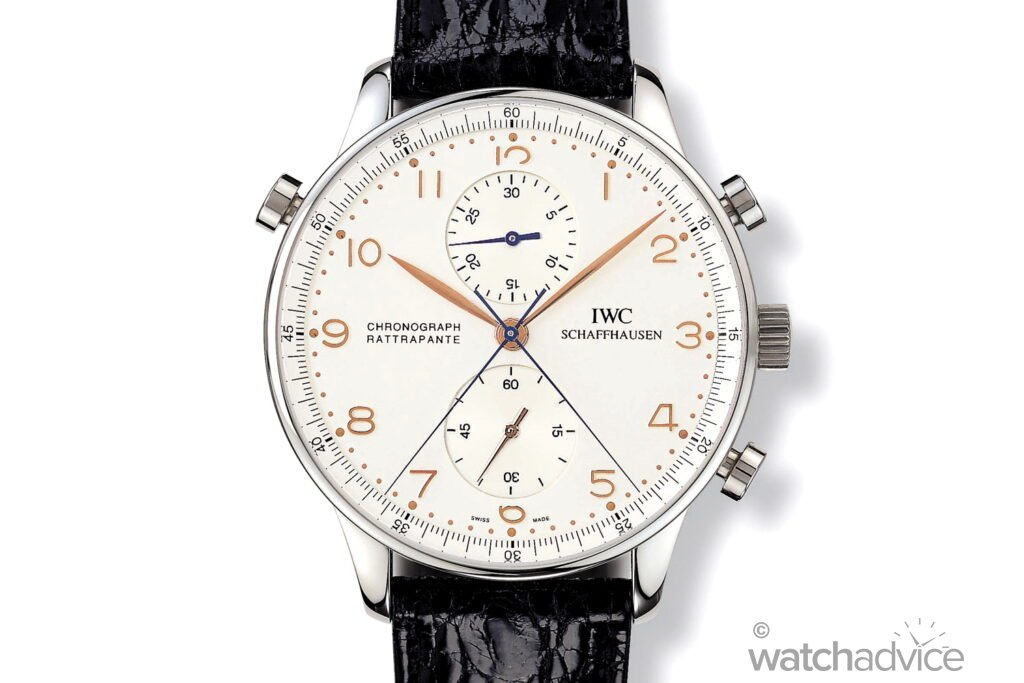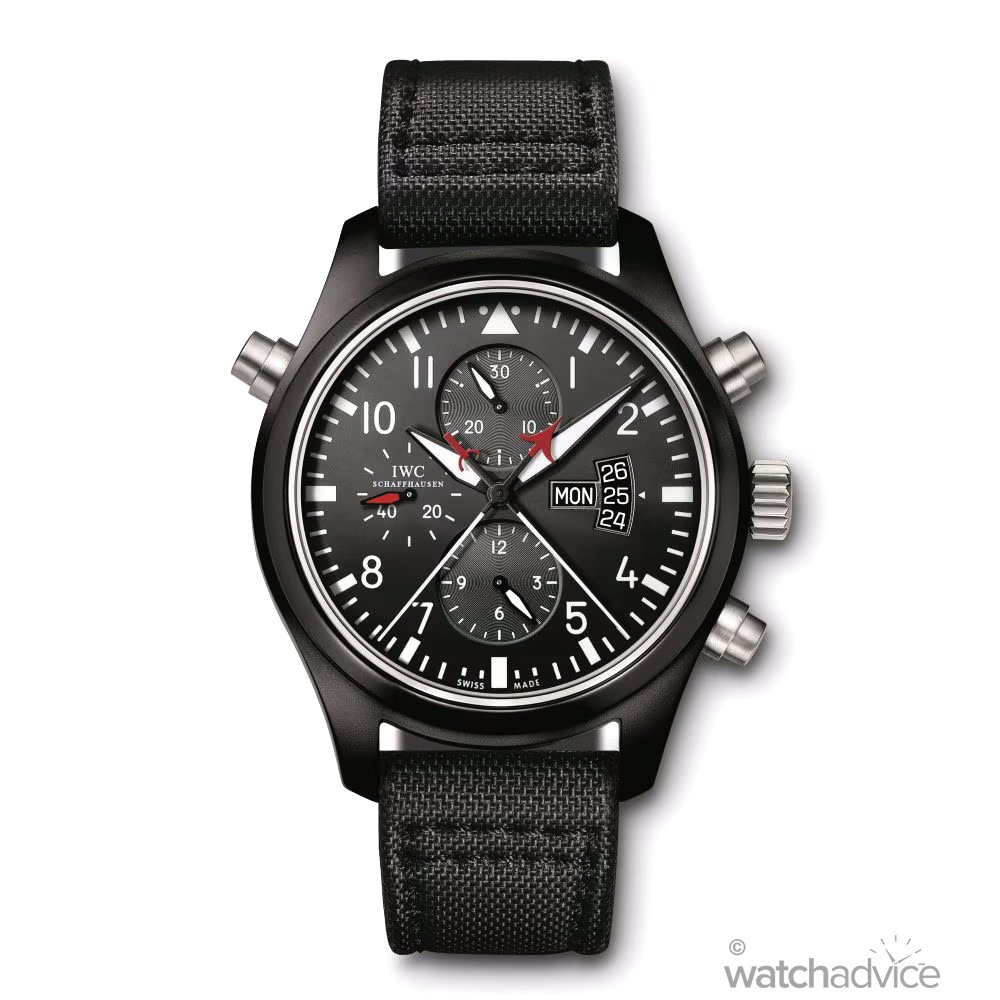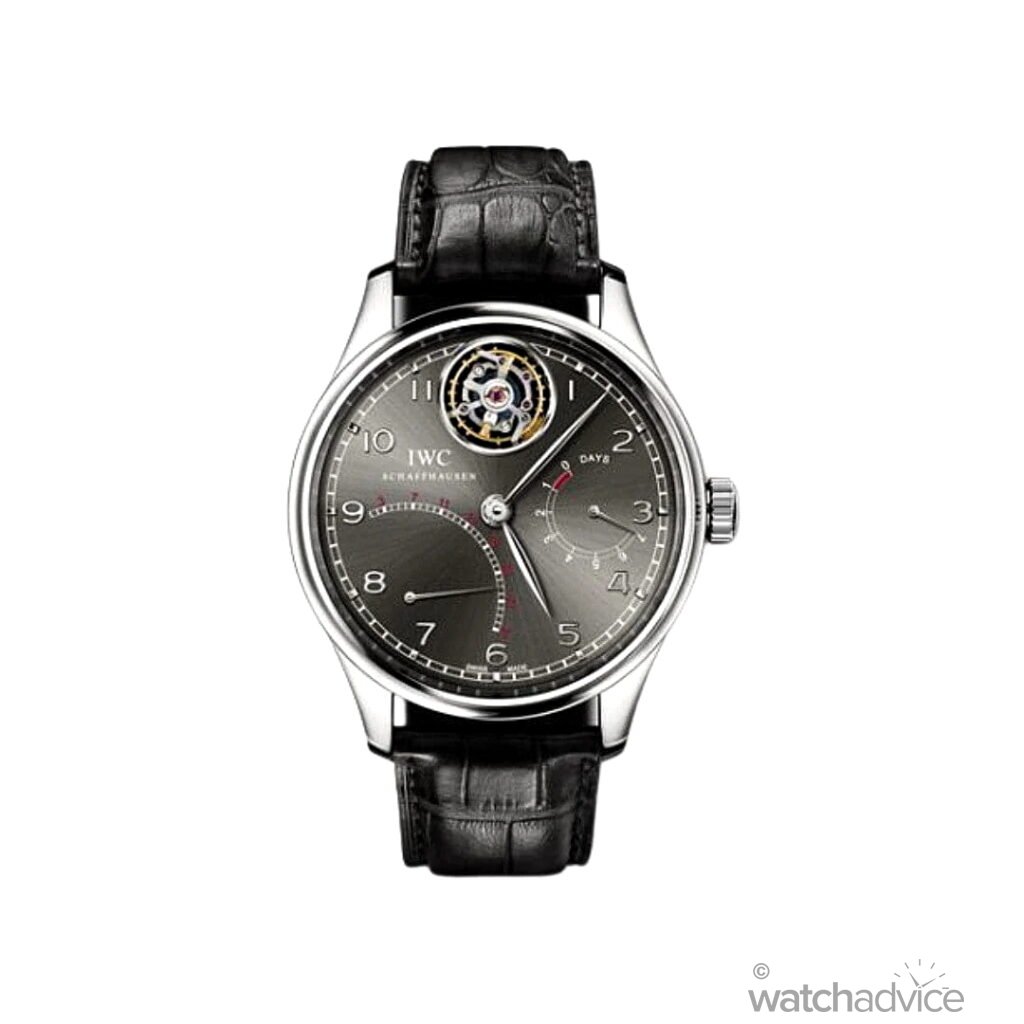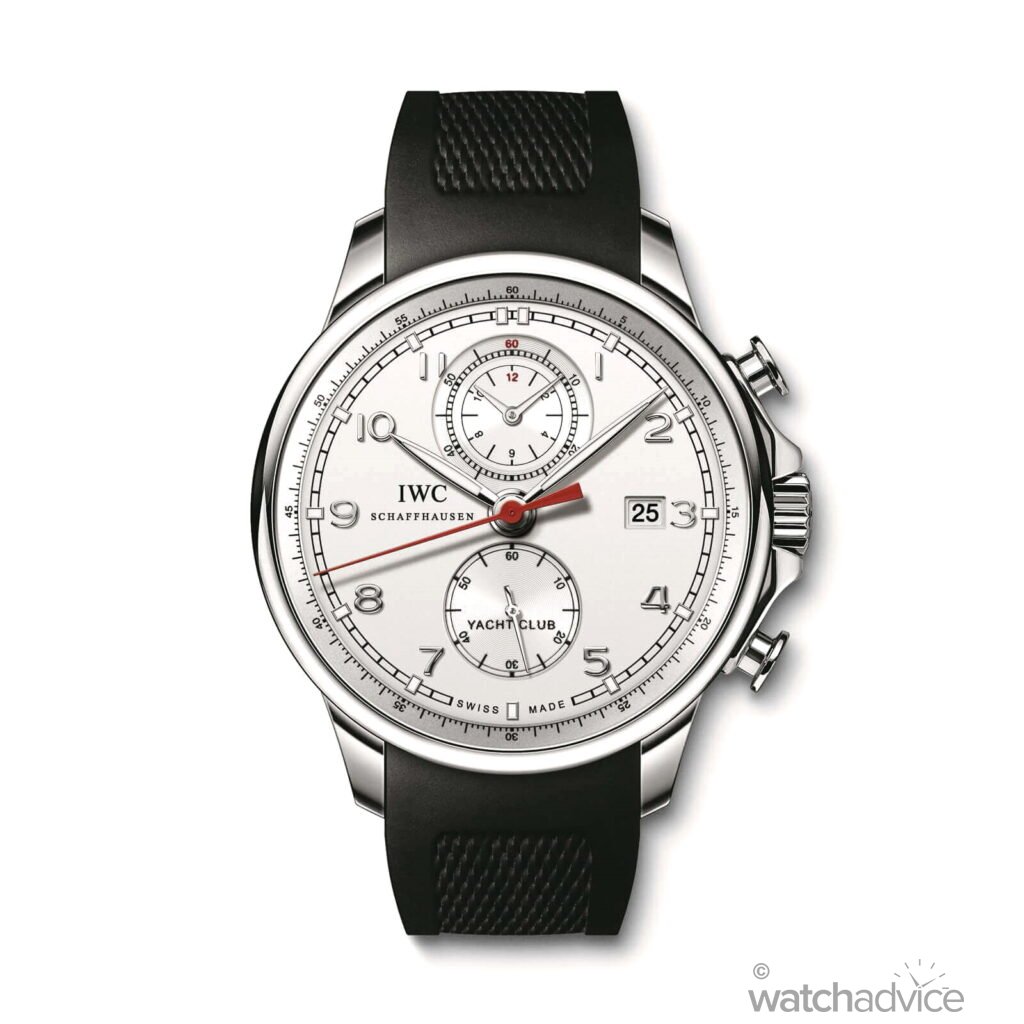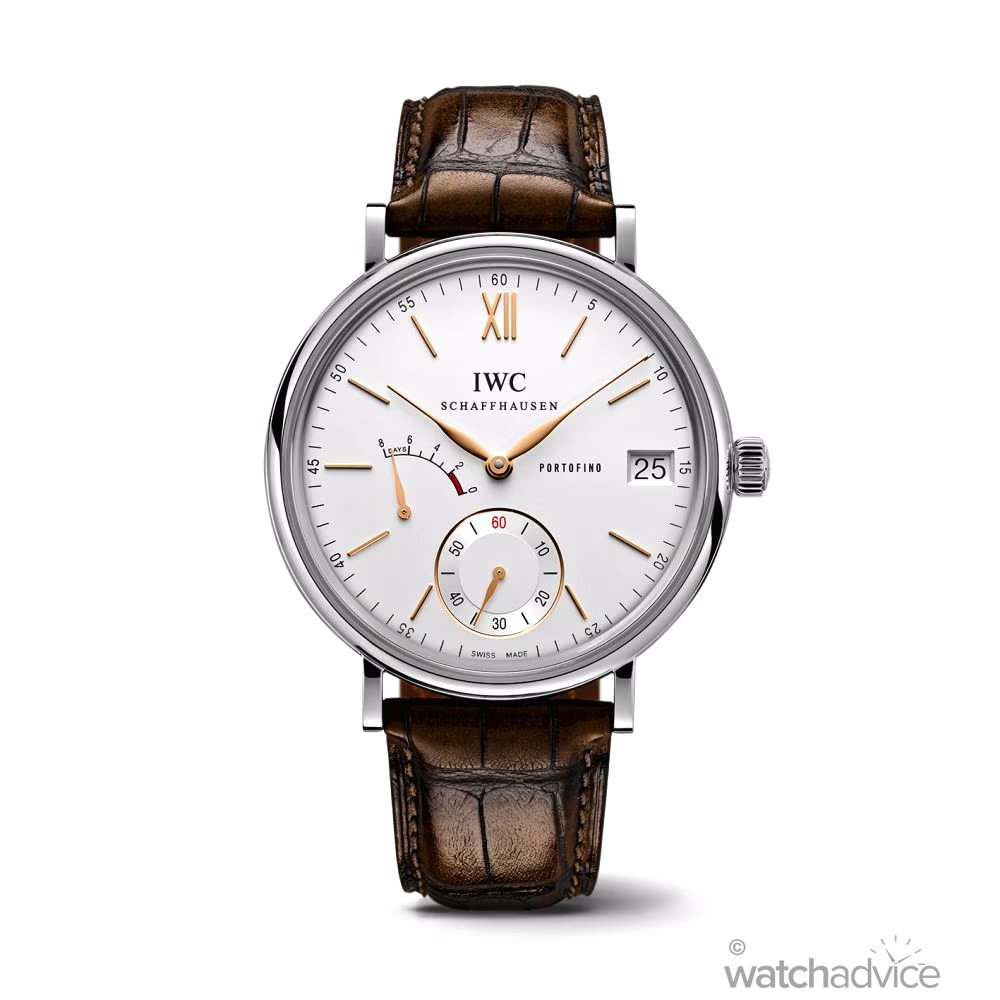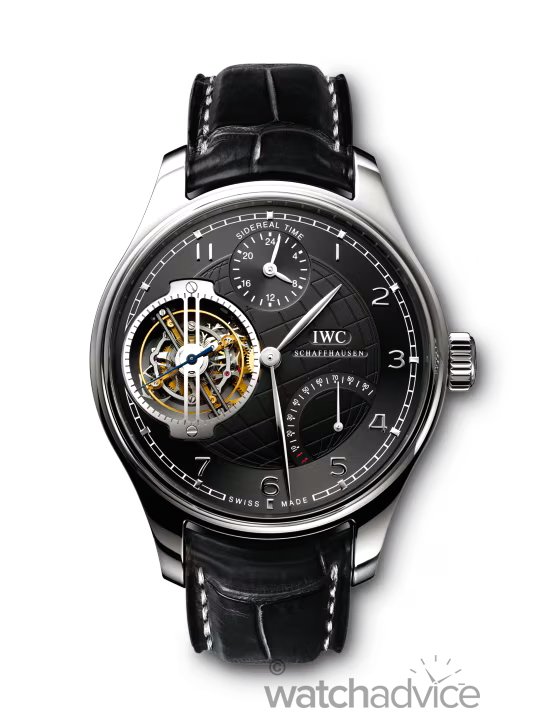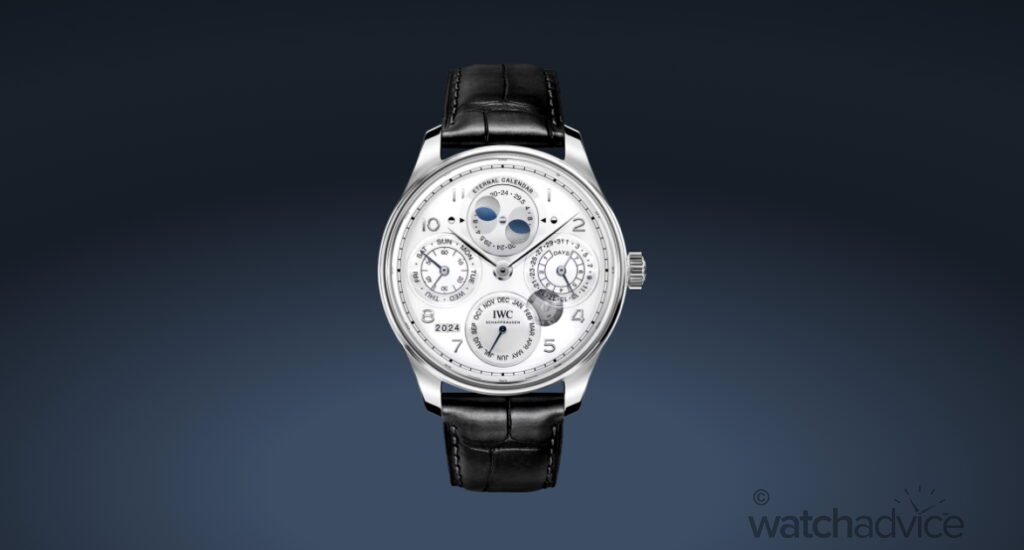IWC Schaffhausen: A Legacy of Innovation, Precision, and Timeless Craftsmanship.
IWC Schaffhausen has established itself as a giant in the world of watchmaking, bringing together precision engineering along with elegant designs to create memorable timepeices. Throughout the course of IWC Schaffhausen’s history, the brand has produced iconic collections while also not being stale by continually pushing the boundaries of horological innovation.
Established in 1868, IWC Schaffhausen has built a reputation as a luxury watch brand that creates timepieces with impeccable craftsmanship, timeless and elegant designs, and mechanical superiority. What IWC Schaffhausen has done well is that they offer different timepiece collections that would appeal to a wide range of tastes and needs. Collections like the iconic Portugieser, the rugged Ingenieur, the elegant and stylish Portifino or even the brand’s navigation instruments for aviators with the Pilot collection. These collections are created while still keeping IWC Schaffhausen’s core design and luxury identity.
In this article, we will take a deep dive into IWC Schaffhausen’s history. We will discover a past filled with the relentless pursuit of creating iconic timepieces while also showcasing the brand’s commitment to innovation, which has made watch enthusiasts around the world fall in love with the brand!
Founding Of IWC Schaffhausen
It may come as a surprise that this Swiss watchmaker has a deep-rooted heritage in the American Pioneering spirit and entrepreneurship. This is all thanks to IWC Schaffhausen’s founder, Florentine Ariosto Jones. He is one of the most important and enigmatic figures in not only IWC Schaffhausen’s history but also American and Swiss watchmaking history.
Florentine Ariosto Jones was born in Rumney, New Hampshire in 1841. While not much is known about him personally, IWC Schaffhausen states that he fought in the Civil War, having enlisted in the 13th Massachusetts Infantry Regiment. It is stated that when he enlisted, he gave his occupation as “watchmaker”.
After the Civil War, F.A Jones then went on to work for one of the best watchmaking firms in America: Firm of E.Howard & Co. He worked his way up to the level of superintendent of the factory, up in 1867 when he decided to set sail to Europe. His vision was clear: he wanted to set up a watchmaking business of his own while integrating the “American System” of watchmaking.
“Combining all the excellence of the American system of mechanism with the more skillful hand labor of the Swiss.”
Florentine Ariosto Jones’ business plan
In 1868, Florentine Ariosto Jones, alongside his travelling companion Charles Kidder (another American watchmaker), travelled through Switzerland extensively. He was in search of the best possible location to set up shop for his venture, and after some time, he stumbled across Schaffhausen. This is where International Watch Company would be created, adding the name of the location in which it was founded to finally create the brand name IWC Schaffhausen. The Marketing and Sales Department of the “International Watch Company” was based in Maiden Lane 5, New York City.
Evolution Of IWC Schaffhausen Watchmaking (1868 -1903)
One of the major advantages of having the company located in Schaffhausen was the region’s topography. The firm is located near the Rhine River, one of the biggest rivers in Europe. Florentine Ariosto Jones used this to his advantage by using hydropower to manufacture the pocket watch movements at the time to the highest possible quality.
1875 – Construction of IWC Schaffhausen Headquarters
The year 1875 saw IWC Schaffhausen construct a brand new premises as the headquarters of the brand. Located on the banks of the River Rhine, this is still the brand’s headquarters. 1875 was also marked as another important event in the brand’s history. IWC Schaffhausen states that “Florentine Ariosto Jones was undoubtedly a visionary, but faced challenges such as rapid production growth, increasing wages, import duties and therefore missed some profitability targets. When Jones failed to meet his shareholders’ expectations, he found himself forced to return to the USA in December 1875. In 1880, a Schaffhausen industrialist, Johannes Rauschenbach-Vogel, took over the company.”
It is sad to say that the founder of IWC Schaffhausen, Florentine Ariosto Jones, never returned to the watchmaking industry after leaving the company and passed away on 18 October 1916 near Boston. He, however, created an everlasting icon and left a legacy. Two years before his death, annual production had already reached 25,000 units!
Johannes Rauschenbach-Vogel passed away in 1881 shortly after taking over IWC Schaffhausen. Following his father’s death, Johannes Rauschenbach-Schenk took over the reins of IWC Schaffhausen.
1899 – IWC Schaffhausen’s First Ever Wristwatch
Ten years after the construction of the IWC Schaffhausen headquarters, the brand created the first pocket watches with a digital hours and minutes display. This was one of the first moments of innovation from IWC Schaffhausen. The next major point of innovation for the company came fourteen years later, when, in 1899, IWC Schaffhausen released the first “wristwatch” for ladies. The small 64-calibre ladies’ pocket watch was fitted with lugs for the wristband to make the wristwatch.
Enrst Jakob Homberger Era (1905-1940)
Johannes Rauschenbach-Schenk steered the company for 24 years until his death in 1905. Following his death, Schaffhausen industrialist Ernst Jakob Homberger took over IWC Schaffhausen. Ernst Jakob Homberger’s era has a significant place in IWC Schaffhausen’s history, as it marked the birth of two watch collections that remain icons even today.

The first was the “Spezialuhr für Flieger”, which is the tradition of producing Pilot’s Watches in Schaffhausen. The unmistakable design of these pilot watches is still relevant and easily recognisable even today! Then came IWC Schaffhausen’s arguably most iconic timepiece, the Portugieser.
1936 – IWC Schaffhausen’s First “Special Pilot’s Watch“
1936 marked the birth of IWC Schaffhausen’s Pilot Collection. Since its creation, it has become an enduring symbol of aviation-inspired timepeices. This “Special Pilot’s Watch” was first created to meet the meticulous demands of the pilots who will wear the watch. The timepiece featured an anti-magnetic escapement, shatterproof glass, a rotating bezel and an arrowhead index to register take-off times. This was certainly one utility watch that indeed proved useful in the real world.
1939 – IWC Schaffhausen’s First Portugieser Watch
The brand’s most iconic line, the Portugieser, was first released in 1939. The story goes that the watch was originally commissioned by two Portuguese businessmen who wanted a large wristwatch with high precision, similar to that of a marine chronometer. IWC Schaffhausen’s response was the Portugieser, which featured a generously sized case, a clean dial design, and very accurate pocket watch movement. Alongside the brand’s Portofino collection, the Portugieser is also an elegant timepiece, with classic aesthetic styling making it a perfect dress watch.
1940 – IWC Schaffhausen First Big Pilot’s Watch
Another emblematic timepiece in IWC Schaffhausen’s lineup is the Big Pilot’s watch. Released first in 1940, the Big Pilot’s Watch was created in response to demand and was designed for military aviators during World War II. The timepiece reference was Big Pilot’s Watch 52 T.S.C (“T.S.C.” stands for “Tirette, seconde central”, which points to the watch’s role as a central navigation instrument). This was one of the largest timepeices ever made at the time. Big Pilot’s Watch 52 T.S.C featured an impressive 55mm case, which was designed specifically this way to have maximum legibility for pilots in the cockpit.
Albert Pellaton Era (Technical Director) (1944 – 1950)
The Albert Pellaton era took place in the post-war years. This period of time played a significant role in the technological advancement of timepeices. The years following the Second World War were characterized by the increased use of technology in people’s everyday lives. This is because more and more people were using appliances that create magnetic fields, which can negatively impact the accuracy of mechanical watches.
It was during this time that Albert Pellaton joined the IWC Schaffhausen team and took the position of Technical Director. The brand states that “Among his inventions are the extremely accurate 89 calibre or the soft-iron inner case, which protects watch movements against magnetic fields. He also developed a particularly efficient bidirectional pawl-winding system, which shot to fame as the Pellaton winding system.”
1946 – Pellaton’s First Design, The 89-Calibre Movement
The 89-calibre movement is considered to be one of the greatest hand-wound movements of the 20th century. Developed in 1946 by Albert Pellaton, it was designed to meet the extremely rigorous and demanding specifications of the British Ministry of Defence.
It is stated that each 89-calibre movement created went through 44 days of testing, in which it was tested in 5 positions at temperatures ranging from -5° to +46° C. The movement was produced for military use for 30 years! It became the standard for how military-grade movements needed to be constructed.
1948 – Pilot’s Watch Mark 11 From IWC With The 89-Calibre Movement
IWC Schaffhausen says this is the most famous Pilot’s Watch the brand has created. Produced in 1948 after an invitation from the British Royal Air Force (RAF) for a reliable and easily readable Pilot’s Watch that had protection from magnetic fields, IWC Schaffhausen developed the Navigator’s Wristwatch Mark 11, which used Albert Pellaton’s 89-calibre movement.
The radar equipment used by the British Royal Air Force at the time generated strong electromagnetic fields, which were able to affect the timepeices accuracy. The Navigator Wristwatch Mark 11 featured an inner cage made of soft iron, with the dial forming the cage’s top. The brand states that it dissipated the radiation around the movement like a Faraday cage.
1950 – Calibre 85 Movement Features IWC’s First Automatic Winding Mechanism
The year 1950 marks a historic movement for IWC Schaffhausen. This is the year Albert Pellaton once again made innovative strides in the forward movement of mechanical timepeices. He developed the revolutionary pawl-winding system, which featured IWC Schaffhausen’s first-ever automatic movement, the Calibre 85.
Creating a watch that could wind itself was a technical challenge that has faced countless watchmakers since the 18th century. While Pellaton wasn’t the first to design the “automatic movement”, what he did design was a very efficient system for winding the timepiece. One that wearers of an IWC automatic watch with Pellaton winding can experience the same level of efficiency to this day!
Hans Ernst Homberger Era (1955 – 1977)
In 1955, Ernst Jakob Homberger passed away after leading the company for almost four decades. In this same year, his son, Hans Ernst Homberger, takes over the reins of IWC Schaffhausen as the last private owner of the brand. Hans Ernst Homberger was born into a family of industrialists, and he learned a lot from his father, which allowed him to take over the company.
In his leadership, the brand would release other classic collections, which to this day are signature timepeices to IWC Schaffhausen. Timepiece collections like the IWC Ingenieur are loved by collections and enthusiasts worldwide for not only Gérald Genta’s design. but also because it was built with durability in mind. Hans Ernst Homberger would also oversee the creation and launch of the first Aquatimer, writing the first chapter of Diver’s Watches for IWC Schaffhausen. During his time, IWC Schaffhausen would also develop the first-ever Swis-made quarts movement, “Beta 21”.
1955 – Launch Of The First Ever Ingenieur With Automatic Movement
IWC Schaffhausen introduced the Ingenieur as a response to the increasing magnetic fields in everyday life, particularly in professional environments. To combat this, The Ingenieur featured an anti-magnetic soft iron inner cage, which protected the movement from magnetic interference. This was a crucial innovation especially for engineers and scientists, now allowing them to wear timepieces in their professional environment.
In 1976, the famous watch designer Gérald Genta came on board to rework the Ingenieur’s design. After creating the Audemars Piguet Royal Oak and finding incredible success with it, IWC Schaffhausen rightly asked him to rework one of their timepieces. After Gérald Genta’s touch, the 1976 Ingenieur SL (Ref. 1832) gained iconic status thanks to the integrated bracelet design, the bezel with visible screws and the industrial aesthetic of the timepiece.
1959 – Design Of 44 Calibre, The First Automatic Women’s Movement From IWC
In 1959, IWC Schaffhausen introduced the brand’s first automatic women’s wristwatch movement, which was the design of the 44 Calibre. This was certainly a significant stride forward for the brand, as it marked their entry into the women’s luxury watch market. The 44 calibre movement brought together the easy operation of an automatic movement, along with the elegance of smaller refined timepeices.
1967 – IWC Releases Aquatimer, Marking The Beginning Of The Brand’s Dive Watches.
IWC Schaffhausen’s entry into the dive watch category began in 1967 with the introduction of the Aquatimer. After many years of research and development, the Aquatimer was designed to meet the demand of diving enthusiasts and professional divers who wanted a robust and reliable timepiece that could withstand the harsh, challenging conditions of underwater exploration.
A unique feature of the original 1967 Aquatimer was that it came with an internal rotating bezel, unlike many other dive watches at the time that featured external rotating bezels. This “internal bezel” on the Aquatimer is operated via a second crown. The purpose of this design was to ensure that the bezel could not be accidentally moved/adjusted underwater. With a water depth rating of 200m, this was indeed a crucial design element!
1969 – The Da Vinci Is The First IWC Wristwatch To Feature The Beta 21 Quartz Movement.
In 1969, IWC Schaffhausen played a groundbreaking role in developing the first-ever Swizz Quartz movement. However, it should be noted that IWC wasn’t the sole creator of this movement. In fact, the Beta 21 Quartz movement was the result of a collaborative effort among a group of Swiss watchmakers, such as Omega. Rolex, Patek Philippe, Longines, Piaget, Zenith, Girrad-Perreguax, Jaeger-LeCoultre, Rado and Bulgari! This massive effort in finding a solution for a Swiss quartz movement was due to the fact that in 1969, the Japanese watchmaker Seiko released the world’s first quartz timepiece with the Astron.
With the creation of the Beta 21 movement, the brands developed their own timepeices to suit the movement. IWC Schaffhausen’s response was the Da Vinci watch, which was a bold timepiece with its distinctive square case and almost futuristic design, contrasting against the more traditional designs at the time.
VDO Adolf Schindling Era (Peak Quartz Crisis) (1978 – 1995)
In 1978, the German Industrial powerhouse VDO Adolf Schilling AG acquired IWC Schaffhausen with the main goal of preserving and enhancing the brand’s legacy of making high-quality mechanical watches. VDO Adolf Schilling AG is known for making automotive instruments and electronics. VDO Adolf Schilling AG took over IWC Schaffhausen during the peak of the Quartz Crisis, a time period when the rise of affordable quartz timepieces hugely threatened manufacturers of traditional automatic mechanical watches. IWC Schaffhausen states that “The new owners brought Günter Blümlein on board, an engineer by training, who was also skilled at marketing. He fully endorsed the company’s heritage and proud tradition and ushered in a renaissance of high-quality mechanics.”
Like some of the other Swiss giants, IWC Schaffhausen didn’t back down from the fight against quartz timepeices. While they developed their own quartz variant with the Da Vinci and BETA 21 movement, the brand’s heart and soul likes in traditional automatic watchmaking. So rather than abandoning automatic watchmaking in favour of quartz watches, VDO Adolf Schilling AG doubled down on IWC Schaffhausen’s mechanical watchmaking prowess, focusing on innovation, craftsmanship and creating fine luxury timepeices.
Up until about 1995, IWC Schaffhausen went into overdrive and released a host of timepieces with varying complications as a way of overshadowing the quartz crisis and putting the attention back on mechanical watches.
1978 – Cooperation With Designer F.A. Porsche Results In The First Wristwatch With A Built-in Compass.
IWC Schaffhausen collaborated with Ferdinand Alexander (F.A) Porshce, a legendary automotive designer, to create the first wristwatch with a built-in compass. The timepiece was named the IWC Porsche Design Compass Watch. It featured a unique case design that can actually be split into two halves, with each half having a significant role. The top half houses the watch movement, while the bottom half contains the functional compass.
1980 – IWC Produces The World’s First Chronograph In A Titanium Case, Designed By F. A. Porsche.
1980 was another milestone year for IWC Schaffhausen, as they became the first brand to house a mechanical chronograph timepiece in a titanium case. The watch, named IWC Porsche Design Titanium Chronograph, showed the world of horology the advantage of using titanium, a material that is exceptionally strong, lightweight and also corrosion-resistant. Alongside these technical feats, the use of titanium on timepieces also gave the watch more modern “aesthetic” look, something that is also reflected in Porsche’s design philosophy of bringing together functionality with aesthetics.
1985 – IWC Shaffhausen’s Da Vinci Collection Gets Perpetual Calendar Chronograph Complication!
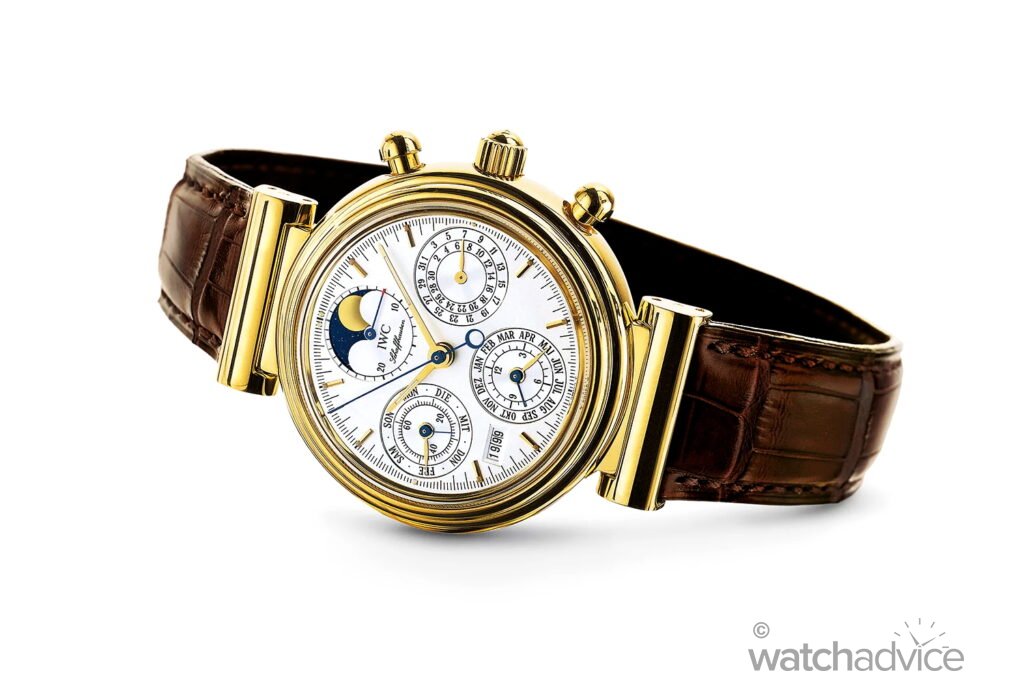
11th of April 1985, at the Basel Watch Fair in Switzerland, was the first time IWC Schaffhausen unveiled their incredible Da Vinci Perpetual Calendar (Ref. 3750). This was the first time the perpetual calendar complication made its way into an IWC timepiece. The story behind the perpetual calendar is that IWC’s head watchmaker, Kurt Klaus, set out on an engineering journey to translate the Gregorian calendar with its many irregularities into a mechanical program for a wristwatch. The ingenious perpetual calendar that Kurt Klaus developed was well ahead of its time compared to the others in the market. The moon phase display is so precise that it will deviate from the actual phase of the moon by just one day after 577.5 years!
This timepiece paved the way for the brand’s new Da Vinci collection. The overall design of the Da Vinci Perpetual Calendar Ref. 3750 was done by Hano Burtscher and proved a significant success. It was released in a period dominated by electronic timepieces (Quartz Crisis) and marked the revival of complex mechanical watchmaking.
1990 – The Wristwatch-Size Grande Complication Appears With A Wealth Of Functions
In 1990, IWC Schaffhausen released its most complicated wristwatch, the Grande Complication. This extraordinary timepiece showcases the pinnacle of the brand’s technical and craftsmanship mastery, as it came with an incredible 21 complications. This certainly was a feat of engineering that made the timepiece among the most complex watches ever made. In terms of functions, the standout ones were the perpetual calendar, chronograph, and minute repeater.
1995 – IWC Schaffhausen Da Vinci Split Seconds Chronograph
Another showcasing of IWC Schaffhausen’s ability to create timepieces with sophisticated complications is the Da Vinci Split Seconds Chronograph. Also known as the rattrapante, this timepiece was created to commemorate the 10th birthday of the automatic Da Vinci watch. The timepiece allowed the wearer to time multiple events simultaneously by adding an additional second hand that can be stopped independently from the main chronograph hand. This allowed the measurement of intermediate times. This wasn’t the only complication, however, as the brand also added a perpetual calendar complication to the mix, which meant that there were no less than 10 hands on the dial!
1995 – Portugieser Chronograph Rattrapante
Upon the release of the Portugieser Chronograph Rattrapante in 1995, it quickly gained a reputation as an icon in IWC Schaffhausen’s lineup of watches. The rattrapante complication was certainly a complication that was popular at the time, and combined with the signature simple yet elegant styling of the Portugieser, it makes for a sought-after timepiece. The timepiece was also much more accessible compared to other rattrapante complication watches at the time, further adding to its allure.
1995 – Portugieser Minute Repeater
Alongside IWC Schaffhausen’s other major releases in 1995, the brand also released a new complication for their Portugieser collection. The brand added the beautiful acoustic minute repeater complication into the elegant Portugieser. IWC states that “Shortly after the market launch of the Portugieser anniversary watch in 1993, a movement fulfilling the most exacting demands of high-end watchmaking began to appear in the collection: the Portugieser Minute Repeater (Reference 5240).” The timepiece came with a sapphire case back, and with it being a manual wound timepiece with no winding rotor, more of the minute repeater complication and the movement can be seen,
Richemont Era (2000 – 2021)
At the end of the 20th century, Richemont Group acquired IWC Schaffhausen. After this acquisition in 2000, IWC Schaffhausen continuously works to expand its six watch collections with luxury design and precision engineering. The brand updates it’s collections with different materials and complications, keeping up with the ever-changing modern watch market, while still being true to the brand’s heritage.
2000 – Introduction Of The Extra-large 5000 Calibre Movement
With Richemont Group acquiring IWC Schaffhausen, this year was also subsequently the year in which the brand developed its own in-house calibre for their large wristwatches. Named the “Extra-Large 5000” calibre, the movement was perfect for watches like the Portugieser, which were larger in size compared to the brand’s other collections. The impressive feat of this movement was that it had a staggering power reserve of 7 days and featured the brand’s patented Pellaton Automatic winding system.
2002 – At SIHH, IWC Presents Big Pilot’s Watch With 7-day Movement
During Salon International De La Haute Horlogerie (SIHH) in Geneva in 2002, IWC Schaffhausen released the Big Pilot’s Watch with its impressive 7-day power reserve. This version of the Big Pilot’s Watch came with a new feature, which is the date window being displayed at 6 o’clock. The watch also featured a central seconds display, which is a crucial tool for aviation.
2003 – Newly Designed Portugieser Perpetual Calendar
It may come as a surprise that the first time the iconic Portugieser line featured a perpetual calendar was in 2003. IWC Schaffhausen had already featured the perpetual calendar complication previously on other collections. Reference 5021 embodied all the watchmaking expertise of the Schaffhausen company. For this model, the brand used the recently developed in-house calibre 5000 movement as the base and added the perceptual calendar complication (in which they have many years of experience now) to the mix to create a stunning timepiece that is highly sought after even to this day!
2007 – First Top Gun Model
In 2007, the very first timepiece bearing the “TOP GUN” name joined the IWC Pilot’s Watch squadron. A breathtaking timepiece that featured a double chronograph mechanism. Each chronograph had distinctive red fighter jets on the ends to symbolise this special TOP GUN timepiece. The TOP GUN name comes from a special training course offered by the United States Navy Fighter Weapons School, the “Strike Fighter Tactics Instructor”.
2010 – IWC Schaffhausen Launches Portugieser Tourbillon Mystère Rétrograde
IWC Schaffhausen releases several new models for their Portugieser collection during 2010. The first is a Portugieser Tourbillon Mystère Rétrograde which combines a flying tourbillon with a retrograde daThis timepiece was, in a way, referencing the milestones achieved by IWC Schaffhausen in terms of mechanical complications. The first milestone is the flying toubillon which is shown on the Portugieser Tourbillon Mystère Rétrograde at 12 o’clock. The second is the 7-day power reserve from the base 5000-calibre, while the third is the retrograde date display which was created in 2010 exclusively for the Portugieser collection.
2010 – IWC Schaffhausen Launches Portugieser Yacht Club Chronograph
Another new Portugieser timepiece released by the brand in 2010 was the Yacht Club Chronograph. This is arguably their sportiest version of the Portugieser. The brand states that “Originally, the Yacht Club was first launched in 1967 and became one of the most successful IWC watches of the 20th century. IWC decided to integrate the “new” generation of Yacht Club models into the Portugieser family.”
2011 – The Brand New Portofino Hand-Wound Eight Days
A brand new Portofino made its debut in 2011, and what an incredible timepiece it was. The ever-so-elegant Portofino has a new face that combines Swiss precision with Italian Joie De Vivre. This is the Portofino Hand-Wound Eight Days. The timepiece features a new IWC manufactured in-house 59210-calibre movement that will run precisely and reliably for a full 192 hours, or 8 days before it automatically stops.s. As with Portofino timepeices, the dial is kept simple and elegant, which in this case features a power reserve indicator and a small seconds counter at 6 o’clock.
2011 – IWC Schaffhausen Releases Its Most Complex Watch Ever Made. The Portugieser Sidérale Scafusia
The most complex timepiece produced by IWC Schaffhausen was released in 2011. The Portugieser Sidérale Scafusia represents 10 years of solid development work by a team of engineers, watchmakers and scientists. It is the most exclusive and complicated mechanical watch ever made by IWC. This watchmaking masterpiece of Haute Horlogerie features a perpetual calendar, a tourbillon with an constant-force mechanism, a power reserve display, sidereal time, a celestial chart showing the horizon on case back, and sunrise and sunset together with displays of day, night and twilight.
2017 – The First Use Of Material “Ceratanium®”

After more than five years of research and development, IWC Schaffhausen releases their patented Ceratanium material. The brand explains this material as “The lightness and robustness of titanium combined with a hardness and scratch-resistance similar to ceramic: Developed by IWC, Ceratanium® not only impresses with its outstanding properties, but also with its unique, matte black color. The metallic Ceratanium® hue emerges on the surface of the material while the components are fired in a kiln.”
2018 – 150 Year Anniversary Of IWC Schaffhausen
To celebrate the 150th anniversary of IWC Schaffhausen, the brand unveiled a special “Jubilee” collection during SIHH. This jubilee collection comprises of a total 29 limited-edition timepieces, which includes Portugieser, Portifino, Pilot’s Watch and Da Vinci watches. The brand also released its first-ever wristwatches to feature the original digital hours and minute display as it appeared on the Pallweber pocket watches back in 1884. One core element that the watches in this Jubilee collection shares is that the watches are either in white or blue lacquered dials.
2024 – IWC Schaffhausen Launches World Record-Breaking Portugieser Eternal Calendar Timepiece
This year, IWC Schaffhausen had a historic moment as the brand released a world-record-breaking timepiece. The Portugieser Eternal Calendar is a watch that can precisely reproduce the Gregorian Calendar’s complex rules, irregularities, and exceptions. It automatically takes into account the Gregorian calendar’s leap year exception rules by skipping three leap years over 400 years. It also features a moon phase display with an accuracy of 45 million years!
So, as we can see from IWC Schaffhausen’s extensive history, it is a statement of the brand’s commitment to horological excellence. From its American industrial beginnings in 1868 to being mixed with Swiss watchmaking precision, the evolution of IWC Schaffhausen has made it one of the most respected names in the world of horology. The brand has shown us they aren’t afraid of a challenge, wether that’s through innovating new materials, or adding complex mechanism into their movements, they are committed to pushing the boundaries of what is possible in both design and engineering. We can’t wait to see what’s in store for the brand with the promising future that lies ahead!



